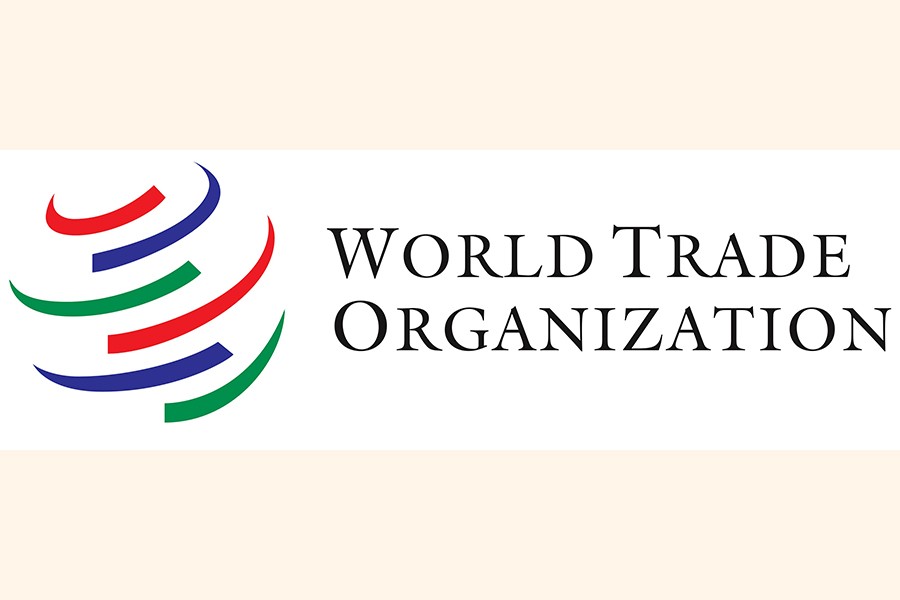
Published :
Updated :

With little over a couple of months to go before the curtain rises for the eleventh Ministerial Conference of the World Trade Organisation (WTO), it is heartening to see that world trade has more than recovered and is well poised to grow in the near future contrary to earlier predictions. At a time when multilateralism in global trade, commerce and investment is being brutally bulldozed by none other than the USA, the picture of trade picking up, that too more than expected, is by all means good news for the WTO to firmly stick to its rule-based multilateral principles for the benefit of the global members.
A press release issued by the WTO secretariat the other day says that following a sharp acceleration in global trade growth in the first half of the current year, WTO economists have made an upward revision of their earlier forecast for 2017. The estimate for growth in world merchandise trade volume in 2017 was 2.4 per cent which has now been raised to 3.6 per cent reflecting a commendable improvement on the economic and policy uncertainties that shrouded most of 2016. Growth in global trade in 2016, it may be recalled, was as low as 1.3 per cent.
According to the press release, "Stronger growth in 2017 was attributed to a resurgence of Asian trade flows as intra-regional shipments picked up and as import demand in North America recovered after stalling in 2016." However, WTO Director-General Roberto Azevêdo does not seem complacent at the apparent prospect of trade boom. He is cautious, and indeed there are reasons when he says, "The improved outlook for trade is welcome news, but substantial risks that threaten the world economy remain in place and could easily undermine any trade recovery. These risks include the possibility that protectionist rhetoric translates into trade restrictive actions, a worrying rise in global geopolitical tensions and a rising economic toll from natural disasters."
While the geo-political tension is a reality and optimism, albeit threat of protectionist rhetoric turning into trade-impeding barriers are gaining currency, about trade should be matched by a note of caution. On the other hand, trade growth which is now more synchronised across regions than it has been for many years could make the current expansion self-reinforcing. Such a positive outcome would be more likely if countries continue to resist the temptations of protectionism and work together with their partners in the multilateral system to ensure that gains from trade are both large and widely shared.
The strength of the upward revision worked out by the WTO economists is partly due to a modest improvement in the world GDP growth (2.8 per cent in 2017 at market exchange rates, up from 2.3 per cent in 2016) and partly due to the composition of that growth. GDP growth accelerated in most major economies in the second quarter, most notably in China.
According to the analysis of WTO economists, stronger growth, particularly in China and the United States boosted demand for imports, which spurred intra-Asia-trade as demand was transmitted through regional supply chains. Chinese demand in the first half of 2017 was driven by solid growth in industry (up 6.4 per cent in real terms for the year to date) and even stronger growth in services (up 7.7 per cent over the same period). Financial conditions in Asia also improved compared to the volatile first quarter of 2016, contributing to business and consumer confidence.
Partial recovery of oil prices in 2017 also appears to have provided some support for investment in many regions. WTO economists, however, cautioned that the pace of trade growth in 2017 is unlikely to be sustained next year for a number of reasons. First, trade growth in 2018 will not be measured against a weak base year, as is the case this year. Second, monetary policy is expected to tighten in developed countries as the Federal Reserve gradually raises interest rates in the United States and the European Central Bank looks to phase out quantitative easing in the euro area. Third, fiscal expansion and easy credit in China are likely to be reined in to prevent the economy from overheating. All of these factors should contribute to a moderation of trade growth in 2018 to around 3.2 per cent. A robust Chinese economic recovery has boosted import demand and stimulated trade between China and its Asian trading partners in 2017, but the pace of Chinese growth is expected to moderate progressively in 2018 and beyond.
In this context, one of the worrying issues relates to monetary policies of the developed countries. Anticipated shifts in the stance of monetary policy in developed countries could provoke large changes in prices and exchange rates that would strongly influence international trade patterns. Renegotiation of the North American Free Trade Agreement (NAFTA) and negotiation of post-Brexit trade arrangements between the United Kingdom and the European Union could also unsettle global and regional trade.
One important observation made in the analysis is that rebalancing of China's economy away from manufacturing towards services may weigh on global import demand for some time. Services, which give rise to lower demand for imports than manufacturing, have seen their share in Chinese value added rise from 43 per cent in 2008 to 54 per cent now. Although this rebalancing may cause Chinese imports to moderate, these changes should promote stronger and more sustainable growth in the long run, says the analysis.
So, for us to conclude is a mix of hope for trade growth and the looming threat of protectionist tendencies that is potentially capable of squeezing the growth prospect of overall trade in the days to come.


 For all latest news, follow The Financial Express Google News channel.
For all latest news, follow The Financial Express Google News channel.